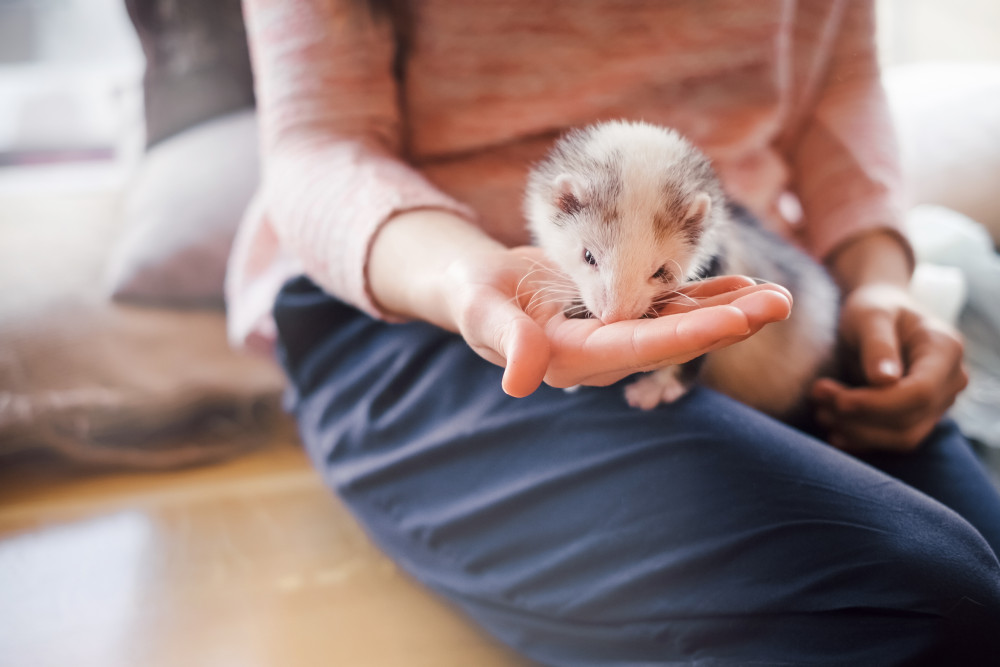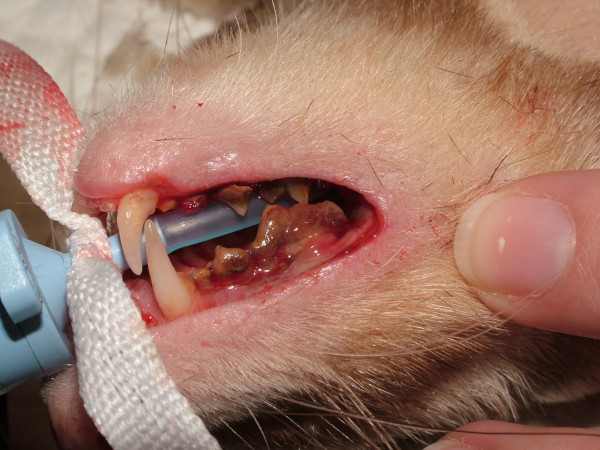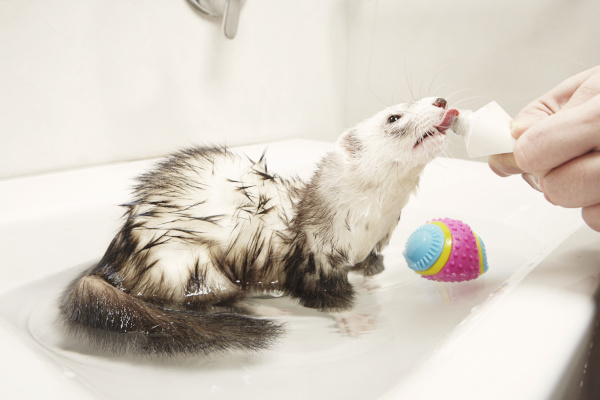How do I groom my ferret?

Although ferrets are generally very clean pets, they do need some assistance in grooming themselves from time to time. Grooming includes bathing and drying, nail trimming, coat brushing, ear cleaning, and teeth brushing.
Brushing
Ferrets groom themselves by using their tongue. After a while, if they are swallowing the hair they lick off their body, they can develop a hairball – a clump of hair knotted in the gastrointestinal tract that can sometimes make them quite ill.
Regular brushing with a soft brush is a great way to keep the coat in good condition and is especially useful in reducing the amount of hair your ferret might swallow. Even with regular brushing, it is a good idea to give a hairball preventative to your ferret regularly, especially when they are shedding (e.g., a laxative gel for cats or ferrets – ask your veterinarian for recommendations).
Ear cleaning
Ferrets tend to have waxy ears; keeping them clean will help prevent problems and infections. Normally, their ear wax is light brown or reddish in colour. Regular cleaning with a gentle ear cleaner that is safe for ferrets (ask your veterinarian for recommendations) will help you spot a change in the amount or the texture of ear wax which could indicate an infection or ear mites.
Put a few drops in the ear, massage the ear for a bit, then let the ferret shake his or her head. This is great for dislodging wax, but it can be messy. Do this in an area that is easily cleaned such as the bathroom. Then use some tissue paper to wipe out the external part of the ear. Never use a cotton swab – you might end up pushing wax down into the ear canal.
Ear mites are quite common in ferrets, and ear infections can occur as well. If your ferret has copious ear wax or discharge, dark brown or black wax, bad-smelling ears, or if your ferret is shaking his or her head, scratching at the ears, or tilting his or her head to the side, a trip to the veterinarian is needed to rule out or promptly treat problems.
Nail clipping
Ferret nails often overgrow, especially if they don’t have a lot of opportunity to dig or climb. Use either human nail clippers or clippers designed for cats. Cut the sharp tip off the nail without cutting into the quick. (Most ferrets have light or translucent nails, and the quick is visible as the pink part inside the nail.) Don’t cut too close to the quick – it’s easy to go too far and cause pain and bleeding. Ask your veterinarian for advice on how to do this safely before you try the first time.
If you clip the nails frequently, making it part of a daily routine where you only do a few nails at a time while offering rewards, your ferret will get used it and accept it as a part of daily life.
Teeth brushing
Ferrets have teeth similar to those of dogs and cats. The front teeth allow them to bite into food, tear it into pieces, and pick it up, while the back teeth slice it up before swallowing. But, like dogs and cats, after a while plaque and calculus can build up on the teeth causing dental disease, gingivitis, and even loss of their teeth.

Dental disease in a ferret.
Brushing teeth on a regular basis is a good preventative measure against this dental disease. It will also give you a chance to spot any developing problems early. You should try to brush the teeth at least once a week. This is not the easiest part of the grooming routine, but getting in the habit can prevent dental problems down the road.
Use a soft toothbrush meant for cats that looks like a set of short bristles on a rubber tube that fits over your finger or even just a piece of gauze wrapped around your finger. Don’t use human toothpaste (ferrets will swallow the toothpaste rather than spitting it out!) – toothpastes for dogs and cats are safer.
Do the outside surfaces of the teeth and gums at first, paying particular attention to the gum line. As with many other grooming procedures, your ferret may object at first. Be patient and slowly increasing the amount you do each session, rewarding your ferret at each step of the way with attention or treats. Chances are your ferret will come to accept tooth brushing as a part of their routine.
Bathing and drying your ferret
You should only bath your ferret if they are dirty; e.g., they have rolled in something, or made a mess while they were eating. If you want to wash your ferret to stop their normal smell, think again. A ferret’s odour is mainly due to the natural oils from the ferret’s skin. A bath may temporarily reduce this smell, but because the bath strips the skin and fur of these oils, it may stimulate an increase in the production of skin oils. The odour may become stronger for a couple of days after the bath!
So, unless your ferret has gotten into something that needs to be washed off, a bath every two to three months is probably plenty. Use a puppy or kitten shampoo, or even baby shampoo.
Use positive reinforcement (i.e., treats and toys) and a gentle voice to make the bath a fun experience for your ferret. Use warm water, just deep enough for your ferret to be able to stand on all four feet. Introduce bathing gradually step by step and be patient while your ferret gets used to this new experience, rewarding them at each step of the way and not proceeding to the next step until they are comfortable. Many ferrets quite enjoy being in water and bathing once they are used to it.

Reward-based training being used (a delicious food treat) to help a companion ferret get used to and enjoy bathtime.
Towel drying is usually sufficient, and ferrets usually dry out quickly, but it is important to make sure they do not become chilled when still damp. Unless their cage is freshly cleaned, that is not the best place to put them while still damp as a dirty cage or litter box will undo the work of the bath. One good idea is to put some clean towels in the tub and let the ferrets dry themselves off by burrowing in the towels. Don’t use a hair dryer – you may scare your ferret or worse, burn them.
Bibliography
Meredith A (2016) Ferret behaviour, housing and husbandry. In: Johnson-Delaney C (ed) Ferret Medicine and Surgery. CRC Press, pp 31–46
Was this article helpful?
This work is licensed under a Creative Commons Attribution-NonCommercial-NoDerivatives 4.0 International License.



